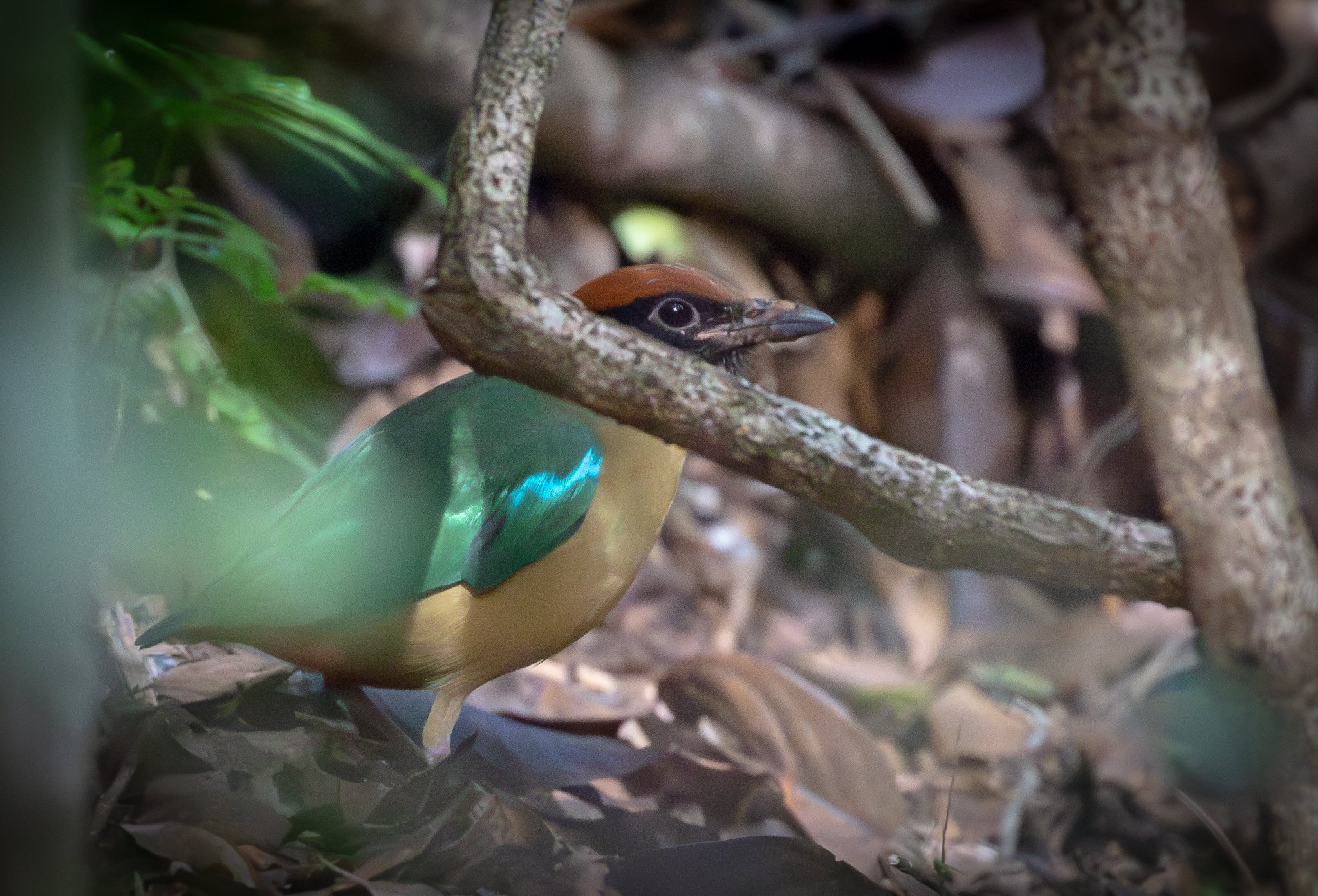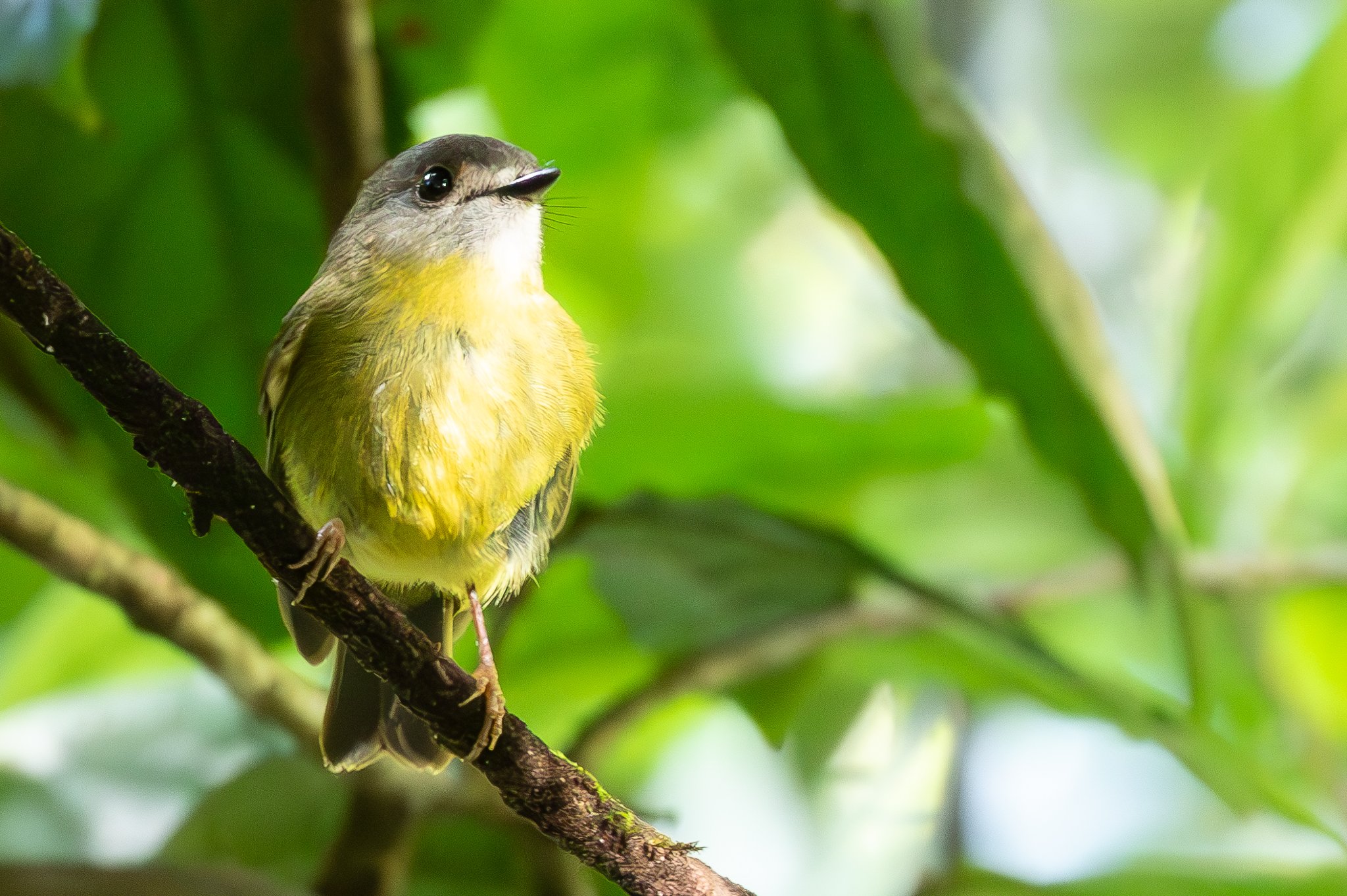Booyong Flora Reserve is a 13 ha rainforest remnant of the Big Scrub that once covered the Northern Rivers, New South Wales plains between Lismore and Byron Bay. The rainforest here is “White Booyong Sub-alliance”, one of three major types found across the Big Scrub. The major tree species are White Booyong, Pepperberry, Myrtle Ebony, Red Cedar, Oliver’s Sassafras, Green-leaved Rose Walnut, Marara, Black Bean, White Beech, Koda, Black Apple, Giant Water Gum, and Small-leaved Fig. On the western track many of the trees are labelled, providing an insight to the richness of the flora. Care is needed here as the tracks are somewhat overgrown.
A Large-billed Scrubwren, photographed in gloomy undergrowth at 1/50 sec and ISO 12,800. The quality of this photo has been helped greatly by Lightroom’s AI powered denoise. Photography was difficult with thick bush and low light, and birds more often heard than seen.
A Fan-tailed Cuckoo, an unexpected sighting. There was a full range of pigeons calling - Brown Cuckoo-Doves, Wonga Pigeons, Brown-capped Emerald-Doves, Rose-crowned Fruit-Doves, and Topknot Pigeons. The sounds of the reserve confirm the richness of species with pigeons, wailing Green Catbirds and Eastern Whipbirds forming the chorus.
This Grey Shrike-thrush was adding its song.
The iconic Red Cedar, a valuable timber for building and furniture, propelled land clearing and the forest industry the length of the New South Wales coastal regions during the nineteenth and early twentieth centuries. In the Northern Rivers Region this species is more often represented by a six foot high, rotting stump.



















